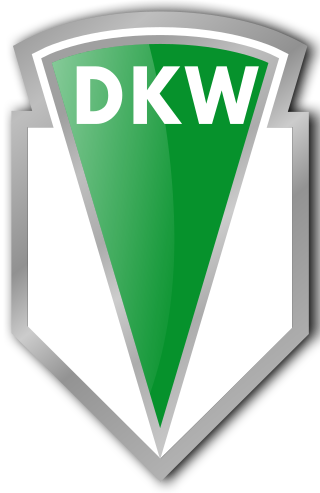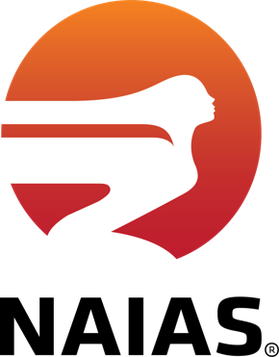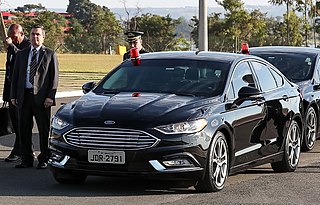
Audi AG is a German automotive manufacturer of luxury vehicles headquartered in Ingolstadt, Bavaria, Germany. A subsidiary of the Volkswagen Group, Audi produces vehicles in nine production facilities worldwide.

DKW was a German car- and motorcycle-marque. DKW was one of the four companies that formed Auto Union in 1932 and thus became an ancestor of the modern-day Audi company.

Néstor Carlos Kirchner Ostoić was an Argentine lawyer and politician who served as the President of Argentina from 2003 to 2007. A member of the Justicialist Party, he previously served as Governor of Santa Cruz Province from 1991 to 2003, and mayor of Río Gallegos from 1987 to 1991. He later served as the first ever First Gentleman of Argentina during the first tenure of his wife, Cristina Fernández de Kirchner. By the time he died in October 2010, he was First Gentlemen from 2007, President of the Justicialist Party and National Deputy from 2009, and Secretary General of UNASUR from May 2010. Ideologically, he identified himself as a Peronist and a progressive, with his political approach called Kirchnerism.

The Justicialist Party is a major political party in Argentina, and the largest branch within Peronism.

The North American International Auto Show (NAIAS), also known as the Detroit Auto Show, is an annual auto show held in Detroit, Michigan, U.S., at Huntington Place. The show was held in January from 1989 to 2019. It was intended to move to the summer in 2020, but was canceled due to the COVID-19 pandemic that year and 2021, before returning in September 2022. It is among the largest auto shows in North America. UPI says the show is "regarded as the foremost venue for [car] manufacturers to unveil new products".

The Audi A5 is a series of compact executive coupe cars produced by the German automobile manufacturer Audi since June 2007. The A5 range additionally comprises the coupe, cabriolet, and "Sportback" version of the Audi A4 saloon and estate models.

In the automotive industry, rebadging is a form of market segmentation used by automobile manufacturers around the world. To allow for product differentiation without designing or engineering a new model or brand, a manufacturer creates a distinct automobile by applying a new "badge" or trademark to an existing product line.
The Volkswagen Group A platform is an automobile platform shared among compact and mid-size cars of the Volkswagen Group.

The International Motor Show Germany or International Mobility Show Germany, in German known as the Internationale Automobil-Ausstellung, is one of the world's largest mobility trade fairs. It consists of two separate fairs, that subdivided in 1991. While the IAA MOBILITY displays passenger vehicles, motorcycles and bikes, the IAA TRANSPORTATION specializes in commercial vehicles. Before the separation, the show was held solely at the Messe Frankfurt.
The Volkswagen Group B platform is a mid-size automobile platform from the Volkswagen Group. It has been used for saloon cars/sedans, estate cars/station wagon, and coupés - under the Volkswagen Passenger Cars, Audi, SEAT and Škoda marques.

The Los Angeles Auto Show, also known as the LA Auto Show, is an auto show held annually at the Los Angeles Convention Center in Los Angeles, California, United States. It is open to the public for ten days, filling 760,000 square feet (71,000 m2) of exhibit space. Since 2006 the event is held in November or December.
Motorcars first arrived in Mexico City in 1903, and since then several vehicle brands have been especially successful. A number of manufacturers make vehicles in Mexico, and may brands have been and continue to be available.
An official state car is a vehicle used by a government to transport its head of state or head of government in an official capacity, which may also be used occasionally to transport other members of the government or visiting dignitaries from other countries. A few countries bring their own official state car for state visits to other countries, for instance, the United States, Russia, the United Kingdom, South Korea, Germany and Japan. It also may serve as an automotive symbol of the head of state and their country. An official state car must have adequate security, capability and stateliness for its duty. A limousine or other high-end vehicle is usually selected.

The Auto Union 1000 is a luxury compact front-wheel drive automobile manufactured by Auto Union GmbH between 1958 and 1969. It was the first model branded as an Auto Union by the manufacturer since the 1930s; it replaced the DKW 3=6, although the latter continued in production, until the end of 1959. The two cars were broadly similar, but the new car had its two-stroke engine enlarged to 981 cc yielding a 10% - 37% power increase.

A VIP armored car is a civilian vehicle with a reinforced structure that is designed to protect its occupants from assaults, bullets and blasts. Armored cars are typically manufactured with bulletproof glass and layers of armor plating, often with a variety of other defensive mechanisms and features to aid the individuals inside. Unlike military armored vehicles, a civilian armored car is designed to be inconspicuous and similar to its factory version.

The Presidential State Car is the official state car of the president of Brazil.

The automotive industry in Germany is one of the largest employers in the world, with a labor force of over 857,336 (2016) working in the industry.

Industrias Aeronáuticas y Mecánicas del Estado was a state-owned entity and autarchic conglomerate of factories of Argentina created in 1951 to promote the manufacture of aircraft and automobiles during the Juan Perón administration.

Federal Peronism, also known as Dissident Peronism, is the faction or branch of either moderate, centrist or right-wing Peronism, that is currently identified mostly by its opposition to the ruling Kirchnerism, the left-wing faction of Peronism.

Federal Consensus was a electoral coalition in Argentina formed to support the alliance between Roberto Lavagna and Juan Manuel Urtubey in 2019 general election. It is formed by dissidents of the Justicialist Party, the Socialist Party, the Freemen of the South Movement, the Federal Party, the Christian Democratic Party, the Third Position Party and the Light Blue and White Union.















